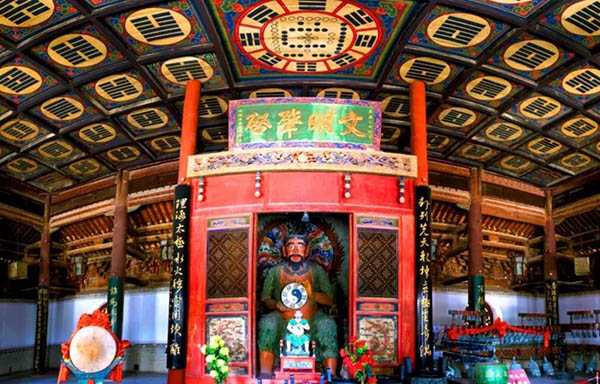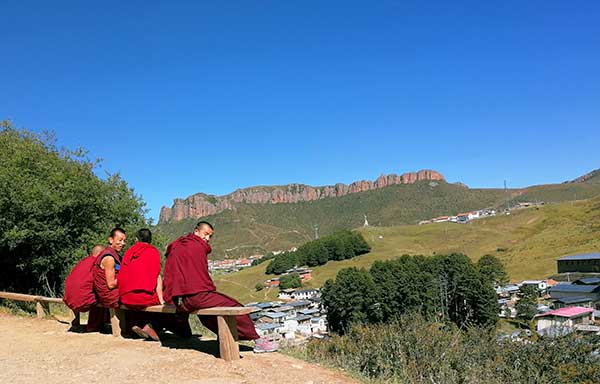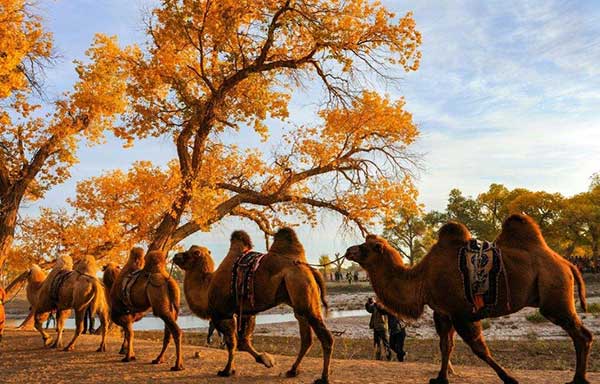 Tianshui Fuxi Temple, also known as Taihao Palace, is a significant historical and cultural site dedicated to Fuxi, who is revered as the progenitor of the Chinese civilization. The establishment of the temple has a rich history that can be traced back to the Ming Dynasty.
Tianshui Fuxi Temple, also known as Taihao Palace, is a significant historical and cultural site dedicated to Fuxi, who is revered as the progenitor of the Chinese civilization. The establishment of the temple has a rich history that can be traced back to the Ming Dynasty.
The temple was founded in 1483 during the Ming Dynasty, specifically between 1483 and 1484, making it one of the oldest and largest temples dedicated to Fuxi in China. It was constructed to honor Fuxi, who is considered the legendary first emperor of ancient Chinese history and is credited with numerous cultural and technological advancements that laid the foundation for Chinese civilization. Fuxi is credited with creating the Eight Trigrams, laying the foundation for Yi studies; inventing written characters, creating the rudiments of writing; developing fishing and hunting production with nets; and establishing marriage rites, determining the rites of marriage. He initiated Chinese civilization and is known as the "Ancestor of the Dragon," historically ranking first among the Three Sovereigns.
Fuxi Temple was built with a grand and expansive layout, reflecting the significance of Fuxi as a cultural icon. The temple complex consists of a series of courtyards arranged in a traditional palace-style format, with four main courtyards featuring 76 rooms arranged along a central north-south axis. This architectural design signifies the importance of Fuxi and emulates the grandeur of imperial palaces.
Inside Fuxi Temple, there are 64 ancient cypress trees planted in the positions of the 64 hexagrams, along with a thousand-year-old locust tree. The ancient trees reach for the sky, with cypress shadows and a gathering of birds, creating a charming atmosphere. Fuxi Temple is an important material carrier of Fuxi culture and serves as a center for the study, display, and inheritance of Fuxi culture, dragon culture, and Yi studies. Today, Fuxi Temple has become a sacred place for overseas Chinese to trace their roots and worship their ancestors, as well as a famous tourist attraction for exploring the sacred traces of Chinese ancestors. Over the years, the temple has undergone several renovations and expansions, particularly during the Qing Dynasty. For instance, the "Kai Tian Ming Dao" archway, which originally stood in front of the main gate, was created in the 2nd year of the Jiajing era (1523) and was rebuilt several times during the Qing Dynasty, most notably in the Qianlong era (1741), and again in the Jiaqing era (1805-1807) and the Guangxu era (1885-1887).
Fuxi Temple hosts three major Fuxi worship events each year: the Spring Festival, which is a folk worship event held around the 16th day of the first lunar month, the public worship ceremony for Fuxi held on June 22nd, hosted by the People's Government of Gansu Province and other departments, and the Autumn Festival for Fuxi on the 19th day of the seventh lunar month. The Tianshui Taihao Fuxi Sacrificial Ceremony is listed by the State Council as one of the first batch of national intangible cultural heritage protection catalogs due to its long history, wide influence, and large scale. Meanwhile, the China Tianshui Fuxi Cultural Tourism Festival, which mainly features the public worship ceremony for the Chinese cultural ancestor Fuxi, has been rated by the International Festivals and Events Association as one of the ten most promising festival events in China.
The temple has been recognized for its historical and cultural importance, being listed as a key cultural relic under national protection in 2001. It serves not only as a place of worship but also as a repository of Chinese ancient history, architecture, and local customs in Tianshui.
Attractions in the area
Related Tours
General Information
Alias: Fuxi Miao
Loc: Tianshui
Entrance: 20 RMB
Open Time: 08:00-17:30
Map
Relevant blogs
-
How did the name of Tianshui in Gansu come about?
The name Tianshui is very pleasant to the ear, and it reminds one of that exquisitely beautiful verse, "After getting drunk, one doesn't know if the sky is in
-
The 8th Silk Road Hotel Festival was successfully held i
On December 27th, the "8th Silk Road Hotel Festival" grandly opened at the Yujing International Hotel in Zhangye. This hotel festival gathered industry experts,
-
The Karez Irrigation System in Turpan has been selected
On September 3rd, at the 75th Executive Council Meeting of the International Commission on Irrigation and Drainage held in Sydney, Australia, the 2024 (11th bat
-
What is the connection between "dragons" and "snakes
In traditional Chinese culture, the snake has a dual identity of auspiciousness and danger. Ancient people believed that the snake not only possesses divine cha
-
Endangered Przewalski's Horses Spotted at Dunhuang Yume
<p>In early February, a group of special "visitors"—the Przewalski's horses—appeared at the Dunhuang Yumen Pass scenic area in Gansu Province, a U
-
The Fourth Dunhuang Cultural Tourism Supplier Conference
On the morning of February 18th, the Fourth Dunhuang Cultural Tourism Supplier Conference in Northwest China commenced at the Dunhuang International Convention







